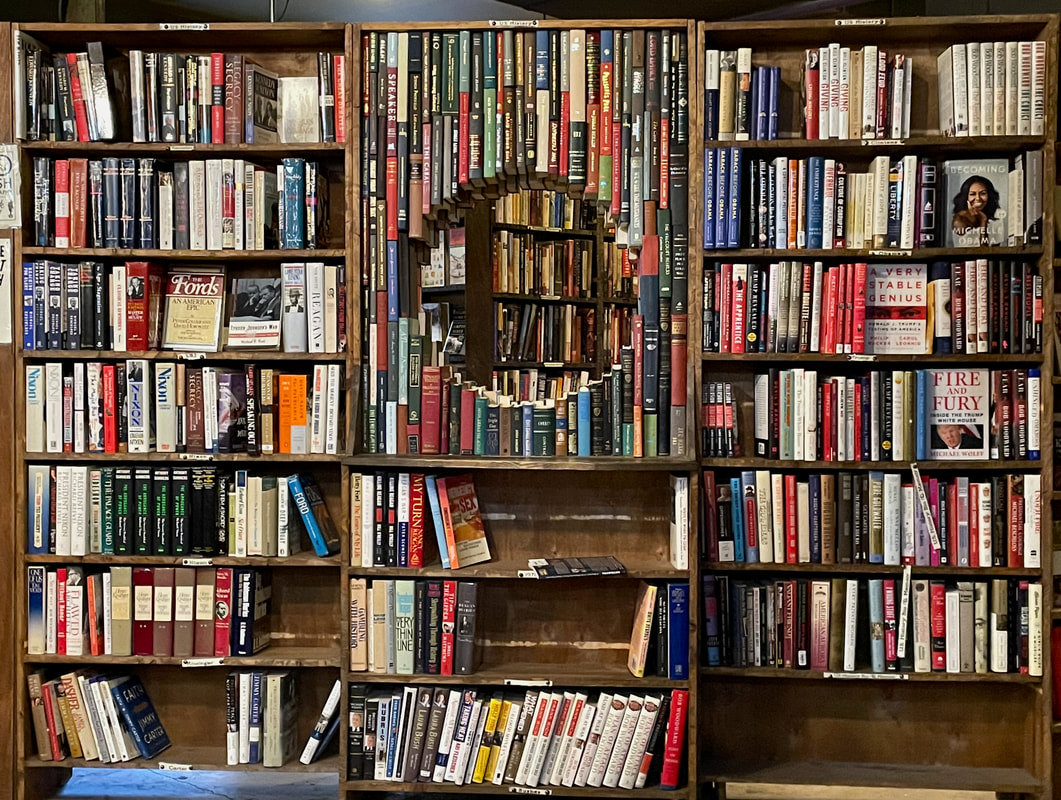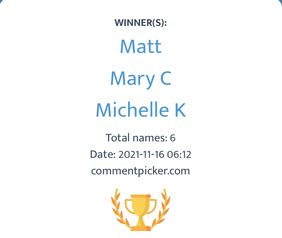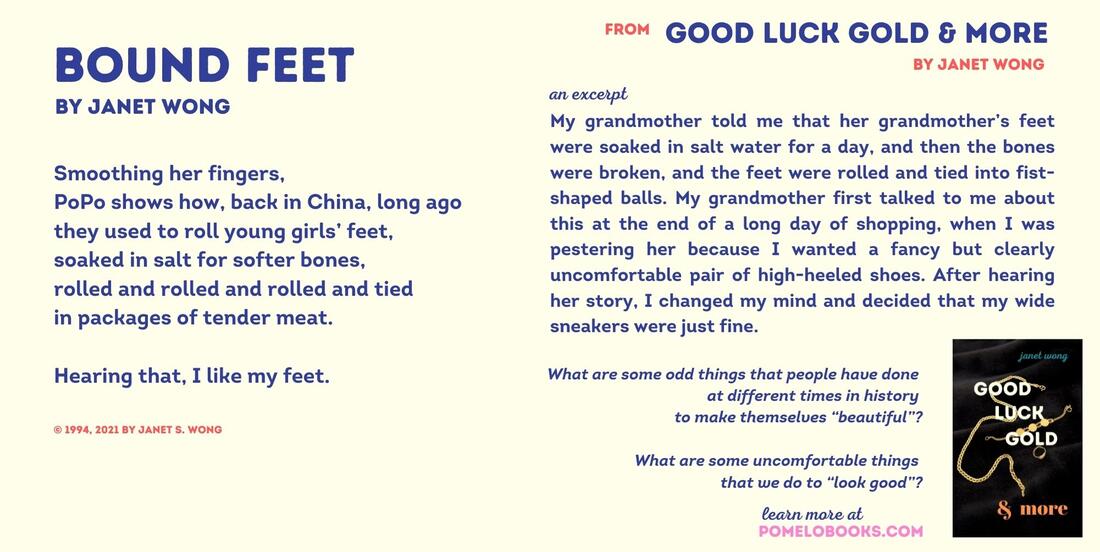|
For 2022, I completer about 65 books. I started more than the 65 books but didn't finish all. I've learned to abandon books. I want to read just about everything! I hear about books on the television, I look them up at the library. I think there were books I read and forgot to list.
I have some goals for 2023:
 Today, Heidi at my juicy little universe is hosting Poetry Friday. Heidi has a n important PSA about voting, Plus a whimsical challenge for us. Did you know that Nov 14-20, 2022 is Folk Tale Week. Read about it at my juicy little universe. There are some wonderful prompts. Last Spring, I connected with Anne Irza-Leggat from Candlewick about interviewing poets. Carrie Fountain is the final of the four poets I interviewed. The Poem Forest is her first book for children but it's not her last one.  JRM: What drew you to the idea of writing about W. S. Merwin’s love of trees and ecology? CF: As a poet myself, I came to know W.S. Merwin first through his writing. When I came to learn of his moving to Maui and planting trees, it just struck me as a perfect story for kids. Merwin made his environmental activism a part of his everyday life. I think it can sometimes feel very overwhelming for kids (and adults!) to contemplate their actions against the large, swirling problem of, say, climate change. And I think Merwin's story offers inspiration: small, everyday commitments can make a difference. This is convenient, as our small, everyday lives are all that we have to work with. JRM: What was your process for writing this book? CF: Really, my desire for this story was to make a connection between Merwin's writing practice and his planting practice. A lifetime commitment to writing means a commitment to sitting down to do it everyday. I think some people imagine poets as people who walk around waiting for inspiration to strike and then jotting down whatever comes to them, and boom: a poem comes to you whole and finished. But that's not how it works! You can't plant a forest all at once. Like writing, it's something you attend to daily. I started writing this book with that idea in mind, and then read everything Merwin wrote about how he found his piece of land, how it was in very bad shape, and how over many years he went out daily to plant palm trees. There was something so meaningful to me in that commitment. And I thought it'd be meaningful to kids, too. JRM: I think one of the best parts about writing is doing research for a topic. What kind of research did you do for The Poem Forest? CF: Merwin wrote (very beautifully) about how he came to make the palm forest, and read everything I could find. Then I read his memoir Summer Doorways and learned more about his early life, and his longing to be in wild places, and his concerns about the environment and his deep sense of place. Rereading his poetry with the wider knowledge of his life, I was able to see how the line between the palms and the poems slowly begins to thin. There is so much meaning and metaphor taken from his experience in planting and living among the palms. JRM: What was the most surprising discovery you had in writing this book? CF: When Merwin first found the plot of land on which he'd plant his forest, it had been a failed pineapple plantation. I knew the basic story--the soil had been misused and needed repair. But I was surprised to learn just how much faith he'd had in that particular spot. People tried to talk him out of buying it. In the record books there was a note about the parcel that read "Nothing will grow here." Merwin wasn't a rich man with money to burn. So the fact that he allowed the land to speak to him, and that he took that chance and made that commitment was doubly inspiring to me. It makes one reflect on choices one has made in one's own life, and how it's best to truly look for room for challenge and faith and promise, rather than playing it safe. JRM: What is one of your favorite W. S. Merwin poems? CF: There are so many. I included his poem "Palm" at the end of the book--and I love that poem. He wrote many poems about the forest and about the palms. But I think my favorite W.S. Merwin poem is called "Thanks." It's a poem about our human pull toward offering gratitude, even in the face of great problems beyond our control. It ends: with nobody listening we are saying thank you thank you we are saying and waving dark though it is JRM: This is your first children’s book. What differences( if any )did you find writing for a target audience of children versus adults? CF: I think a lot of that is instinct, and remembering how smart and funny kids are. There are differences between these two audiences, but when you start focusing on the differences--what you can and can't say--you get into trouble. I like to imagine my own kids as my readers, and knowing how deep and philosophical they can be, I feel very comfortable going places that might feel very "adult" to others. So often I find children have much better access to the big, hairy, existential questions of life. JRM: Will there be more books for children in the future? What are your upcoming projects? CF: YES! I'm currently working on a book about work. I've always been fascinated by the idea of what people do all day. This book is a playful investigation of what work means, and what people actually do at their jobs. I want to celebrate the dignity of work and showcase jobs that don't always get attention in children's books. I think a lot of kids have trouble finding their own parents' jobs represented in books--and so I thought I'd write a book for them. Thank you, Carrie, for this great interview. I loved The Poem Forest so much. I am looking forward to your new book. If you would like to win a copy of The Poem Forest, leave a comment. a winner will be selected next week. Thanks to Anne Irza-Leggat from Candlewick for offering a copy to someone. It's Halloween. Have you ever taken a dare on Halloween? 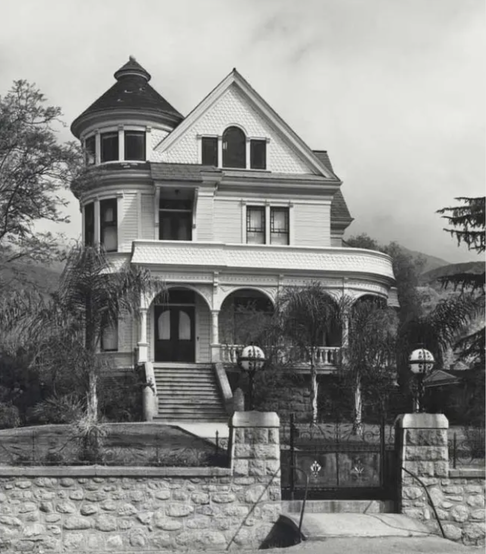 Addison W. Lee House, constructed 1888. Addison W. Lee House, constructed 1888. This house was around the corner from my childhood home (1958-1963). As a child, I was afraid of a tiny old woman and her St. Bernand who lived in a house down the street from my house. I was convinced this woman was a witch and that she would cast spells on the neighborhood houses. (The lights in those houses would be out at night if she hast put her spell on them). Carrie Clickard was a guest author at Today's Little Ditty, in 2017. She challenged us to write a poem about a person, place, or thing which scared or spooked you as a child. Michelle Barnes, selected the poem below to be part of her collection, The Best of Today's Little Ditty: 2017-2018, published in 2019. I moved from Monrovia in 1963. It was that year that this magnificent house was torn down, making way for a housing development,  Welcome to Poetry Friday. Thanks to Sarah Grace at Sarah Grace Tuttle is sharing her process with metered verse. Can't wait to read more closely. Poetry Challenge: The Inklings are serving up: Wordy 30 is a poem using exactly 30 letters. Each line should have the same number of letters. Each line should use one word. You might have 6 lines with 5 letters in each line (like Wordle), or 5 x 6, 3 x 10, 10 x 3, 15 x 2, 2 x 15, 30 x 1, or (most unlikely) 1 x 30. I am taking a class with the fabulous Georgia Heard and Rebecca Kai Doltich. What I love about them is the talking about poems and poets plus honoring our work. And with honoring the work are nudges and wonderings to enhance revision. Last week, I had the about actually happen. We keep our back door to the deck ope a lot so our dog, has access to the deck. And we have had numerous finches, sparrows, and juncos fly in. (Admitly, it creeps me out as there's an old wives' tale about birds entering house). Last week it was a hummingbird. It was a moment of wonder. In class, we talked about how this poem was akin to a little play and how to create more drama by cutting words. Today while revising, it occurred to me that there was a better title from some words I cut. I only had titled is "Hummingbird" because I couldn't think of anything else, until today, "Autumn Afternoon". Book News: What Is A Friend? Edited by Sylvia Vardell and Janet Wong It's here! What is A Friend?, edited by Sylvia Vardell and Janet Wong. The poets in this book submitted poems for consideration. It's a great example of ekphrastic poetry while considering what makes a friend or friendship. It is a Children's Book Council "Hot Off the Press" Selection for October. 100% of the profits will be donated to the IBBY Children in Crisis Fund (IBBY.org).  I had fun with this poem. I knew nothing about skateboarding. (Riding a bicycle was difficult enough). The terms came from researching and followed by checking with former students for accuracy. Bonus: I have a great nephew who's name is "Ollie."  The fabulous Tabatha at The Opposite of Indifference is hosting Poetry Friday today. She's has some fun memes and a call for the holiday poetry swap. Squee. During National Poetry Month, I connected with Anne Irza-Leggat from Candlewick about interviewing poems. I interviewed Sally Walker and Helen Frost as they had books coming out. Two more authors have books this fall. Today I am interviewing the fabulous Betsy Franco about her latest poetry collection, Counting in Dog Years and Other Sassy Math Poems, illustrated by Priscilla Tey. It's books birthday is October 11, 2022. (In time for a CYBILS Poetry nomination.)  JRM: You have written many math poetry books. What draws you to writing poetry about math? Were you a good math student? BF: I love to combine unexpected things, so why not poetry and math? Art, English, and math were my favorite subjects. To be honest, I had to ask a lot of questions to understand math, but I think that makes me better at presenting it in a playful way. I always thought math was beautiful and surprising and funny in a way that most people didn’t necessarily see. It started when my algebra teacher had us find all the math Lewis Carroll tucked into his Alice in Wonderland books. That opened my mind. I started seeing math everywhere. Obviously, my amazing illustrator, Priscilla Tey, feels the same way. She even added hilarious “numbots” to the illustrations. JRM: How did the idea of Counting in Dog Years and Other Sassy Math Poems come to you? BF: Whenever I saw math in an unusual place— in my life, my sons’ lives, or in nature— I would write a note about it on a scrap of paper and add it to a special folder. Finally the folder was thick enough to create a collection. It actually took years. JRM: What was the process in deciding the arc of the book and the sections? BF: I wrote the poems first and then hoped I could make sense of them. Strangely, they fit pretty evenly into categories. I wanted the book to follow a kid from home to inside the kid’s head to school to summer—almost like the “seasons of a kid’s life.” JRM: Were there poems that didn’t quite make the cut for the book? BF: Yes, there were quite a few poems that didn’t make it in. My favorite was “Dividing Rivers and Other Such Things.” Here’s the first verse. A river’s divided by forks. The country’s divided by states. A poem is divided by verses, A month is divided by dates. We realized that this poem wasn’t as personal as some of the others, so it got bumped. JRM: I feel like you have been a teacher or been in a lot of schools as some of these poems are so relatable. “Lost and Found” really resonated as the school library I taught in had “Lost and Found” week where all the clothes would be on the couther of the library for students to look through. BF: I’ve walked to the elementary school around the corner since my grown sons were little boys. And I visit their high school regularly. I’m the constantly visiting author and everyone knows me. I notice wild things, big and small, like the continuously growing lost and found. I was a teacher in what seems like another life, too. JRM: Would you have an early draft of a poem and then the final draft so readers can take a peek at the process? BF: Here is an early draft of one of the poems. I probably wrote 15 drafts to get to the final poem. In this version, the rhythm is off and needed to be fixed—bigtime. I work on rhythm, rhyme, humor, and language on my own, and my wonderful editor, Mary Lee Donovan, does a great job of pointing out rough patches and giving me expansive ideas as well. Washing Machine Magic The washing machine';s a wizard. I have scarcely any doubt. I put in 16 dirty socks, and 3/4 of them came out. What happened to the other 4 in the midst of getting clean? There must have been some magic trick performed inside the machine. If I change to wearing white socks, I really won't have to care. I won't be afraid to lose favorites, and I'll always have a pair! Below is the final poem. The second verse gives more possibilities for why the socks are missing. And then, my extraordinarily-imaginative illustrator came up with another reason for missing socks. The mice are dragging the socks into their hole! Her illustrations always makes me laugh out loud. Washing Machine Magic The washing machine’s a trickster. Or else it’s a hungry lout. I put in sixteen dirty socks -- three-fourths of my socks came out. What happened to the other four that disappeared from sight? A magic trick, a sleight of hand, the washer’s appetite? I think I’ll switch to all white socks. Then I’ll never have a care. If only half my socks come out, I can always make a pair! JRM: What is next for you? BF: I write in many genres. One of my screenplays was just filmed, and I just completed a graphic novel of the same story. I’m on to another screenplay/graphic novel combo now, but I always have poetry collections in the back of my mind because poetry lets me play around in a way that other genres don’t. So we’ll see what happens! Thank you Betsy for sharing a peek into your process. If you want to get a really fun book to add to your collection, look no further than Counting in Dog Years and Other Sassy Math Poems. ANNOUNCEMENT: The CYBILS Awards nomination period opens up on October 1, 2022. Show your favorite poetry book some love and nominate it. This year novels in verse will be in its own category separate from collections and anthologies. Whoo-hoo! For more info, look HERE.
 in the night Ukrainian Sunflowers seeds of peace ©2022 Jone Rush MacCulloch 
Thanks to Carol at Beyond LiteracyLink for hosting the round up. Her autumn gallery is stunning as usual.
And it's a busy weekend for many who are attending NCTE!
The winners of GOOD LUCK GOLD AND MORE. Lucky winners have books winging their way to them.
Sign up for the 2022 Poetry Postcard Exchange

I am thinking about the November challenge to write an ode to November. I went through old posts looking for words.
#gratiku, Day 19. word mining old blog post treasures recycle 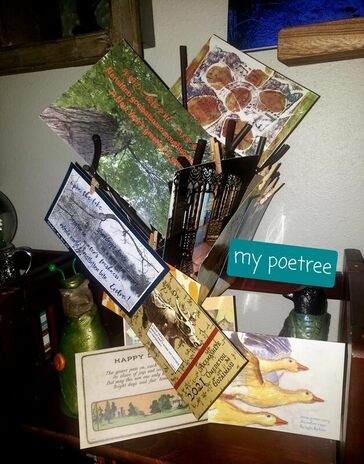
It's time. Sign up for the 2022 New Year Postcard Exchange. Send five, send ten or send to all.
Did you know there are 43 days until 2021 ends? Woohoo! Let's celebrate the New Year with a New Year Postcard? In Japan, it’s called Nengajo, a Japanese custom of ushering in the new year. How It Works:
 Be sure to head to Matt at Radio, Rhythm & Rhyme. He is hosting the Poetry Friday Round Up and celebrating the arrival of Friends & Anemones: Ocean Poems for Children, created by members of The Writer’s Loft in Sherborn, Massachusetts. Do you like challenges? The Poetry Sisters have an invitation: You’re invited to join our challenge for the month of November! We’re writing an Ode to Autumn. An ode is a lyrical poem, a way of marking an occasion with a song. Whether you choose an irregular ode with no set pattern or rhyme, or the ten-line, three-to-five stanza famed by Homer himself, we hope you’ll join us in singing in the season of leaf-fall and pie, and sharing on November 26th in a blog post and/or on social media with the tag #PoetryPals. The #inklings offer this challenge: “Write a poem that includes the idea of percentage or percent. Percentages are all around us in recipes, prices, assessments, statistics. Include the idea of percentage in your poem in some way.” Friends & Anemones: Ocean Poems for Children, created by members of The Writer’s Loft in Sherborn, Massachusetts, was officially published November 8, 2020!  I've been reading GOOD LUCK GOLD and MORE by Janet Wong. This is her re-issue and expanded collection of poems from her DEBUT book in 1994. I have the original book signed by her. I highly recommend this book be in every elementary and middle school for sure. These poems are timeless. I remember reading them twenty-seven years ago and being astonished by the treatment given to the author and now reading them they still give me pause at how some humans treat others. The “story behind the story” or “story after the story” additions are powerful and provide such a good bridge to talk to students about racism. JRM: GOOD LUCK GOLD was your debut book for kids in 1994. What was it like to take a class from Myra Cohn Livingston? JW: Myra Cohn Livingston mentored a whole generation of children’s poets in her Master Class in Poetry. This was a UCLA Extension class that was offered only to those Beginning Class alums who were invited by Myra; there was seldom an opening. As a result, Myra’s Beginning Class was full of students who had taken it five or more times and were not beginners at all: Monica Gunning, Kristine O’Connell George, Joan Bransfield Graham, and more. Some people who took Myra’s classes were published picture book writers who wanted to know more about poetic techniques: Alice Schertle, April Halprin Wayland, Ruth Bornstein, and Tony Johnston, for example. Earlier this year I was invited by Julie Hedlund to speak with the 12x12 group, and I felt like I was channeling Myra with my emphasis on assonance, consonance, and internal rhyme. Myra died in 1996, but you can still learn from her book Poem-Making: Ways to Begin Writing Poetry (now out of print, but you can find it at a library). JRM: And you can also find it at Thrift Books. GOOD LUCK GOLD was written twenty-seven years ago. How has life experiences informed you when writing the new content? JW: Five years ago, I thought that the discussions about anti-Asian racism weren’t really needed any longer. I was content to let the original GOOD LUCK GOLD rest in peace. But the recent surge in anti-Asian racism has scared me. I’m afraid for my 86-year-old father, worried that some crazy racist will attack him on the street. I’m even afraid for myself sometimes; I’ll think twice before walking somewhere alone. Because of all this, I felt an even greater urgency when writing the prose pieces about racism, an immediate need to connect with readers on a basic human level. JRM: I could see this book being a mentor text for students to write their own poems about their parents and grandparents, food, and culture. Have you worked with students to create their own collections? JW: In 2013 I worked with some students from Chadwick School in California to create anthologies—a 6th grade anthology and a 3rd grade anthology where every student was involved somehow: writing, illustrating, editing, copyediting, typing, doing technical work, and even marketing the books that they created, selling them on Amazon to raise funds for charity. I think those students really enjoyed having a “real world” publishing project. If schools want to embark on this kind of project for students in a certain grade or in a publishing club, I know that there are several poets who could provide guidance (for a fee). Jone, YOU would be an ideal poet to help schools make their own books. (Parent volunteers: raise some funds and hire Jone!) JRM: Was there one poem that was more challenging to write? JW: The poem “Bound Feet” went through many, many drafts. The prose piece, too. There is so much that can be said about the complicated history of foot-binding. After trying to write a narrative poem, I finally decided to keep the poem close to my own personal experience, writing about how I felt as a child when my grandmother first told me about her grandmother’s bound feet. When a poet—or any writer, even a writer of nonfiction for adults—is having difficulty with a topic, I think one good approach is to pretend that you are a child again and write from the child’s point of view. JRM: What would you like readers of this interview to know about #StopAsianHate and bystander training?
JW: The Hollaback! bystander training session is free and takes just one hour of your time; you can sign up in a minute at ihollaback.org. There are sessions focused on anti-Asian racism and also on different communities and issues. My main takeaway: as a bystander, we sometimes worry about getting involved because we know that we can’t fix the situation alone. And maybe we’re scared. But you don’t have to resolve the problem all by yourself. Just do something to get things started. You can distract. You can document. You can delay until more help arrives. Be the first bystander to step up, and others will follow. JRM: What is your next project? JW: Sylvia Vardell and I plan to continue with our Anthologies 101 and 201 courses next year, working on books similar to the THINGS WE DO book of ekphrastic poems with your fun poem "ZOOM,” Jone. People can learn more about these workshops at our website here. Next up for the January/February 2022 Anthologies 201 group is THINGS WE EAT, a topic near and dear to my heart (and stomach). One of the photos that Sylvia and I have selected features a Korean restaurant scene and the word "kimchi." I am super excited for that book—you could even say I’m hungry for it! For fun: Sylvia's and Janet's next project is THINGS WE EAT. What would be a food for the letter X? Comment below. Janet is generously sending 6 books to people who comment (3 from last week and 3 this week) I will announce the winners next FRIDAY, NOVEMBER 19. Thank you, Janet for providing readers with great back story about GOOD LUCK GOLD and More. Looking forward to the next books that you write.  Thanks to Mary Lee Hahn for hosting the Poetry Friday Community this week. Her post is up and includes the Inklings challege for November: “Write a poem that includes the idea of percentage or percent. Percentages are all around us in recipes, prices, assessments, statistics. Include the idea of percentage in your poem in some way.” Thanks, Linda Mitchell for the idea. #inklings Do you like challenges? The Poetry Sisters have an invitation: You’re invited to join our challenge for the month of November! We’re writing an Ode to Autumn. An ode is a lyrical poem, a way of marking an occasion with a song. Whether you choose an irregular ode with no set pattern or rhyme, or the ten-line, three-to-five stanza famed by Homer himself, we hope you’ll join us in singing in the season of leaf-fall and pie, and sharing on November 26th in a blog post and/or on social media with the tag #PoetryPals.  I've been reading GOOD LUCK GOLD and MORE by Janet Wong. This is her re-issue and expanded collection of poems from her DEBUT book in 1994. I have the original book signed by her. I highly recommend this book be in every elementary and middle school for sure. These poems are timeless. I remember reading them twenty-seven years ago and being astonished by the treatment given to the author and now reading them they still give me pause at how some humans treat others. The “story behind the story” or “story after the story” additions are powerful and provide such a good bridge to talk to students about racism. In preparing for this blog post and next week's post, she and I put together that I attended a joint library conference for Oregon and Washington in the late 1990's. At the time, Janet used a chop with the ancient Chinese pictogram for good luck (not the contemporary Chinese character). Janet would encourage people to make their own pictogram showing what their personal vision of good luck (or a lucky day) would be. Mine lucky day would be reading all day (sun + moon + head + book). She drew two versions of a book, traditional and simplified. I must have also said that being able to nap outside was another lucky day. (sun + moon + head and body in bed). JRM:What were your favorite books as a child? How aware were you that books about Asian characters weren’t available? (I’m thinking how there are students I know that would love to read this book and see themselves in it. I remember getting it for the library when it first came out) JW: I was totally oblivious to the lack of Asian faces in the books I read—but part of that was likely because, as a very young child, most of my favorite books featured animals. The Story of Bubbles the Whale was my tip-top favorite; I had fallen in love with the pilot whale Bubbles on trips to Marineland. When we talk about diversity and inclusion and children being able to “see themselves” in a book, I worry that we sometimes think too restrictively. If anyone had pressed me to talk about it, I would’ve identified as much as a “Bubbles fan” as I did as an Asian American. That being said, if there had been a book featuring Bubbles AND a short, plump Asian American girl who loved watching TV and eating shrimp chips, that would’ve been PERFECT. JRM: Wow, I remember Marineland and I was a tiny bit sad to learn it no longer exists recently. GOOD LUCK GOLD was your debut book for kids in 1994. What was it like to take a class from Myra Cohn Livingston? JW: Myra Cohn Livingston mentored a whole generation of children’s poets in her Master Class in Poetry. This was a UCLA Extension class that was offered only to those Beginning Class alums who were invited by Myra; there was seldom an opening. As a result, Myra’s Beginning Class was full of students who had taken it five or more times and were not beginners at all: Monica Gunning, Kristine O’Connell George, Joan Bransfield Graham, and more. Some people who took Myra’s classes were published picture book writers who wanted to know more about poetic techniques: Alice Schertle, April Halprin Wayland, Ruth Bornstein, and Tony Johnston, for example. Earlier this year I was invited by Julie Hedlund to speak with the 12x12 group, and I felt like I was channeling Myra with my emphasis on assonance, consonance, and internal rhyme. Myra died in 1996, but you can still learn from her book Poem-Making: Ways to Begin Writing Poetry (now out of print, but you can find it at a library). JRM: How long did it take to write the forty-two “story behind the story” or “story after the story”? Did you go back through old journals and notes to write the new additions? JW: It took about six months. It was a difficult project because several of the poems are about unpleasant topics such as racism and bullying. It was really important that the prose pieces and writing prompts were engaging enough to draw the reader in. I hope this book helps families and teachers and librarians to get kids talking about important issues—and working toward change. JRM: What surprised you when you were writing the additional content? JW: I was surprised by how vividly I remembered details from some things that happened when I was in my 20s. I still remember the “ching chong Chinaman” taunting from when I was in law school as clearly as if it happened last week. And yet I had blocked out my childhood memories of those similar incidents. JW: Sylvia Vardell and I plan to continue with our Anthologies 101 and 201 courses next year, working on books similar to the THINGS WE DO book of ekphrastic poems with your fun poem "ZOOM,” Jone. People can learn more about these workshops at our website here. [link: https://pomelobooks.com/anthologies-101] Next up for the January/February 2022 Anthologies 201 group is THINGS WE EAT, a topic near and dear to my heart (and stomach). One of the photos that Sylvia and I have selected features a Korean restaurant scene and the word "kimchi." I am super excited for that book—you could even say I’m hungry for it! JRM: Ooh, I love this idea. Food is such a great topic to write about. I did that as a topic for National Poetry Month in 2020. Next week, I will have the second half of Janet Wong's interview. I'll be sharing about why 100% of the proceeds of the book will going to #StopAsianHate and bystander training. BONUS: Janet is offering six books for prizes. Three this week and three next week. Comment on this blog post. Win a copy of GOOD LUCK GOLD and MORE. Janet will generously send one to the winners. Good Luck! |
AuthorAll photos and poems in these blog posts are copyrighted to Jone Rush MacCulloch 2006- Present. Please do not copy, reprint or reproduce without written permission from me. Categories
All
Archives
July 2024
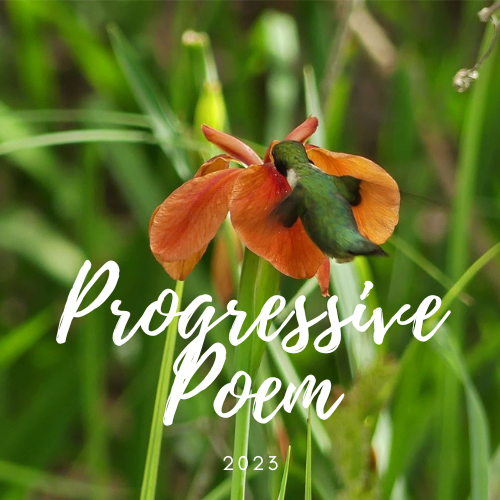
2023 Progressive Poem
April 1 Mary Lee Hahn, Another Year of Reading April 2 Heidi Mordhorst, My Juicy Little Universe April 3 Tabatha, The Opposite of Indifference April 4 Buffy Silverman April 5 Rose Cappelli, Imagine the Possibilities April 6 Donna Smith, Mainely Write April 7 Margaret Simon, Reflections on the Teche April 8 Leigh Anne, A Day in the Life April 9 Linda Mitchell, A Word Edgewise April 10 Denise Krebs, Dare to Care April 11 Emma Roller, Penguins and Poems April 12 Dave Roller, Leap Of Dave April 13 Irene Latham Live You Poem April 14 Janice Scully, Salt City Verse April 15 Jone Rush MacCulloch April 16 Linda Baie, TeacherDance April 17 Carol Varsalona, Beyond Literacy Link April 18 Marcie Atkins April 19 Carol Labuzzetta at The Apples in My Orchard April 20 Cathy Hutter, Poeturescapes April 21 Sarah Grace Tuttle, Sarah Grace Tuttle’s Blog, April 22 Marilyn Garcia April 23 Catherine, Reading to the Core April 24 Janet Fagal, hosted by Tabatha, The Opposite of Indifference April 25 Ruth, There is no Such Thing as a God-Forsaken Town April 26 Patricia J. Franz, Reverie April 27 Theresa Gaughan, Theresa’s Teaching Tidbits April 28 Karin Fisher-Golton, Still in Awe Blog April 29 Karen Eastlund, Karen’s Got a Blog April 30 Michelle Kogan Illustration, Painting, and Writing |








